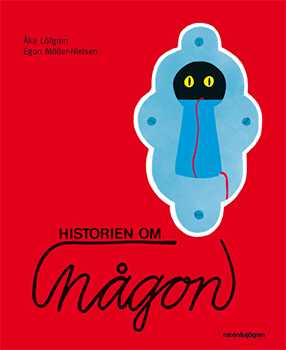Historien om någon facts for kids

Cover art
|
|
| Author | Åke Löfgren |
|---|---|
| Illustrator |
|
| Country | Sweden |
| Language | Swedish |
| Genre | Children's literature, mystery |
| Published | 1951 |
| Publisher | Folket i Bild, Rabén & Sjögren |
| Pages | 26 |
Historien om någon (which means "The Story About Someone" in Swedish) is a classic children's book. It was written by Åke Löfgren and illustrated by Egon Møller-Nielsen.
The book first came out in 1951. It was published by Folket i Bild. Later, Rabén & Sjögren re-released it. There's even a special version for people who can't see well. This version has pictures you can feel, made by Eva P. Eriksson and Marguerite Ahlbom.
Historien om någon is a mystery picture book. You follow a red string of yarn through a 1950s Swedish house. The goal is to find out who the unknown visitor is. This clever idea came from the illustrator, Møller-Nielsen. The book is still very popular today. It even became a musical in Stockholm in 2011.
What's the Story About?
Historien om någon is a fun mystery book. It's like a game of hide-and-seek. You, the reader, are the main character. You are searching for a secret visitor in a house.
The adventure starts with a red string of yarn. This string comes from your grandma's knitting. The mysterious visitor has brought it into the house. You follow the string to find out who they are.
Each page shows a new room in the house. As you follow the string, you find clues. For example, you might see a jug of milk that has tipped over. The string also does something impossible for a human. It loops around a staircase railing! Finally, you follow the string to a cabinet. You peek through the keyhole. Guess what? The visitor is a cat named Nisse!
The person telling the story makes you feel like you are really there. They ask you to do things, like "Let's open the door." This makes you an active part of the exciting adventure.
Images for kids



